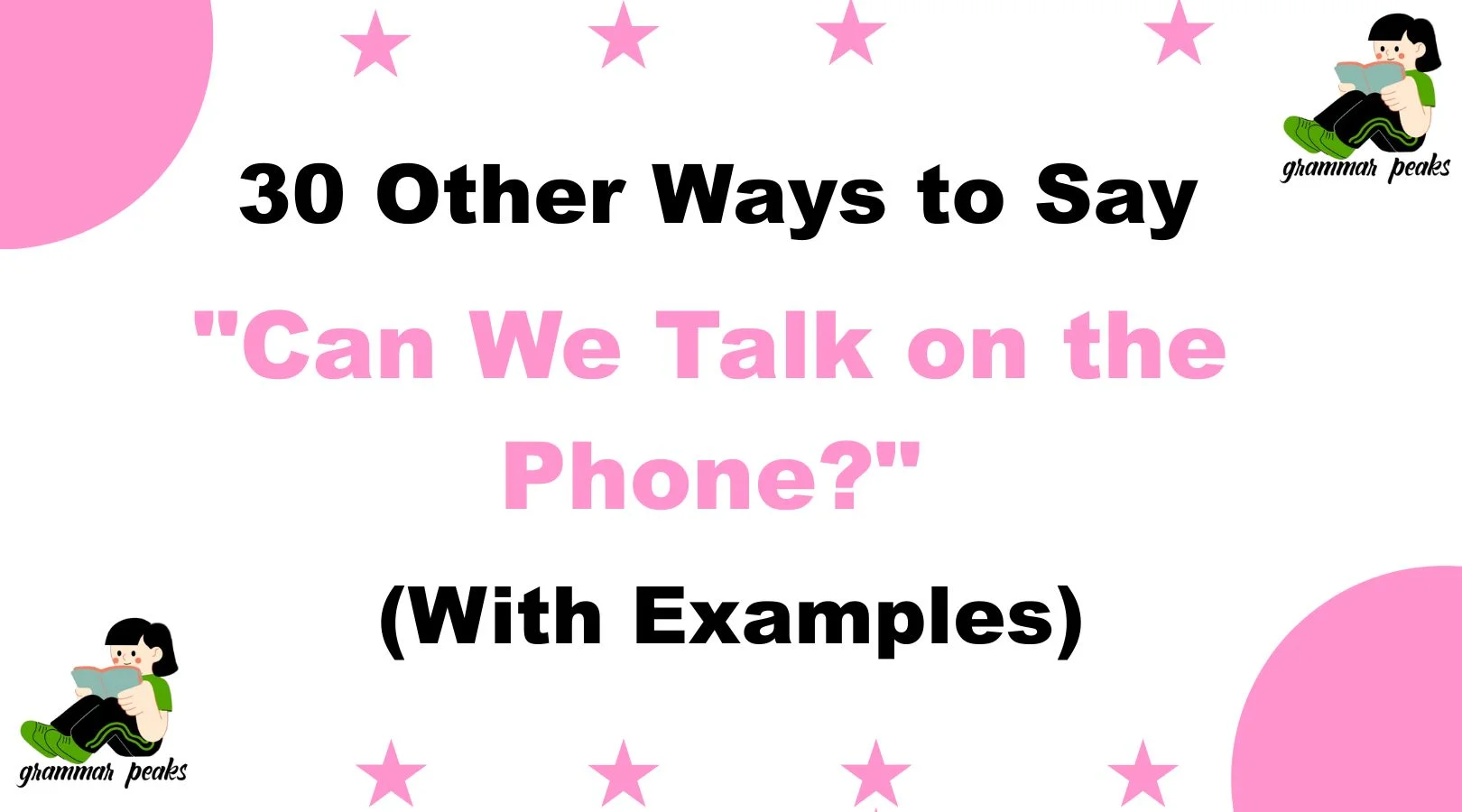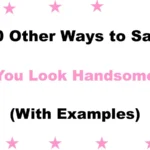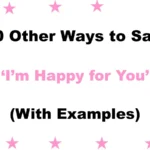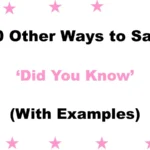In professional and casual communication, how we ask to move a conversation to a phone call can vary based on tone, formality, and context. Finding the right words for this simple request can make the interaction feel more considerate, engaging, or formal.
In this article, we’ll explore 30 alternative ways to ask, “Can we talk on the phone?” to suit different settings and ensure that you can always express yourself appropriately, whether in business or personal settings.
What Does “Can We Talk on the Phone?” Mean?
Asking, “Can we talk on the phone?” is a direct request to move the conversation from a digital or face-to-face medium to a phone call. This might be necessary for clearer communication, more personal interaction, or discussing sensitive topics.
When to Use “Can We Talk on the Phone?”
You’ll typically use this phrase when:
- A conversation requires more clarity than text or email can provide.
- You prefer verbal communication over written messages.
- You need to discuss confidential or sensitive information.
Is It Professional/Polite to Say “Can We Talk on the Phone?”
Yes, it’s generally professional to ask for a phone conversation when necessary. However, the tone and approach can make the request more or less appropriate depending on the situation. For formal settings, consider using more polished phrasing, while in casual settings, a simple request works just fine.
Pros and Cons of Asking “Can We Talk on the Phone?”
Pros:
- Facilitates clearer, more direct communication.
- Helps build rapport and personal connection.
- Can help resolve issues quickly without the delay of emails.
Cons:
- Might be seen as too abrupt or demanding in some contexts.
- Could interrupt the person’s schedule if they’re unavailable.
- Phone calls are often harder to schedule and may require more time than written communication.
“Can We Talk on the Phone?” Synonyms:
- Would You Be Open to a Phone Call?
- Do You Have Time for a Quick Call?
- Could We Connect Over the Phone?
- How About a Phone Call?
- Would You Be Available for a Call?
- Could We Schedule a Phone Meeting?
- I’d Like to Discuss This Over the Phone
- Would It Be Convenient to Talk on the Phone?
- Can We Set Up a Time for a Call?
- How Does a Phone Call Sound?
- Want to Hop on a Quick Call?
- Mind If We Chat by Phone?
- Can I Give You a Quick Call?
- Let’s Take This to a Call
- I Think This Might Be Easier Over the Phone
- Shall We Jump on a Call?
- Are You Free for a Call Later?
- Let’s Chat by Phone When You Have a Moment
- Could We Take 5 Minutes to Talk?
- Let Me Know When You’re Free to Talk
- Want to Talk This Through?
- Can We Have a Quick Phone Chat?
- I’d Love to Speak With You Directly
- Let’s Catch Up Over the Phone
- Can We Touch Base by Phone?
- Let Me Call You to Explain
- I’d Prefer to Discuss This by Phone
- Let’s Take a Few Minutes to Chat by Phone
- Can I Give You a Ring?
- Shall I Call You?
1. Would You Be Open to a Phone Call?
Definition: A polite, open-ended way to suggest a phone call.
Detailed Explanation: This phrase shows respect for the other person’s time and allows them to decide without pressure.
Scenario Example: “Would you be open to a phone call this afternoon to discuss further?”
Best Use: When you want to suggest a call but allow flexibility in timing.
Worst Use: In urgent situations where you need an immediate response.
Tone: Polite, considerate.
2. Do You Have Time for a Quick Call?
Definition: A casual and respectful way to request a phone call.
Detailed Explanation: This phrase conveys a sense of urgency while still being polite.
Scenario Example: “Do you have time for a quick call to clarify the details?”
Best Use: When you need a brief conversation or clarification.
Worst Use: If the call is expected to take a longer time.
Tone: Friendly, casual.
3. Could We Connect Over the Phone?
Definition: A formal and neutral way to request a phone conversation.
Detailed Explanation: The word “connect” adds a professional touch to the request, making it suitable for business contexts.
Scenario Example: “Could we connect over the phone tomorrow afternoon?”
Best Use: In professional settings where formality is important.
Worst Use: In casual or informal interactions.
Tone: Professional, respectful.
4. How About a Phone Call?
Definition: A straightforward, casual request.
Detailed Explanation: This phrase is direct but friendly, making it ideal for informal conversations.
Scenario Example: “How about a phone call to go over the details?”
Best Use: In casual business environments or with acquaintances.
Worst Use: When you need to maintain a formal tone.
Tone: Friendly, informal.
5. Would You Be Available for a Call?
Definition: A formal way of asking for availability for a phone conversation.
Detailed Explanation: This phrasing allows the recipient to confirm their availability and is suitable for business settings.
Scenario Example: “Would you be available for a call later this week?”
Best Use: In professional or formal scenarios.
Worst Use: In urgent or informal requests.
Tone: Professional, polite.
6. Could We Schedule a Phone Meeting?
Definition: A more formal way to suggest a phone conversation with an emphasis on scheduling.
Detailed Explanation: This is perfect when you need to arrange a time for the call in advance.
Scenario Example: “Could we schedule a phone meeting for Thursday afternoon?”
Best Use: When planning a meeting or discussion well ahead of time.
Worst Use: In situations requiring immediate contact.
Tone: Formal, businesslike.
7. I’d Like to Discuss This Over the Phone
Definition: A clear and direct way to request a phone conversation.
Detailed Explanation: This phrase clearly expresses your desire to have a phone conversation about specific matters.
Scenario Example: “I’d like to discuss this over the phone when you’re available.”
Best Use: When you need to make an important point or decision over the phone.
Worst Use: When the person may not be able to talk immediately.
Tone: Direct, professional.
8. Would It Be Convenient to Talk on the Phone?
Definition: A polite and respectful way to inquire about the other person’s availability for a call.
Detailed Explanation: This phrasing is considerate and acknowledges the person’s time.
Scenario Example: “Would it be convenient to talk on the phone this afternoon?”
Best Use: When you want to check for availability without imposing.
Worst Use: In urgent situations where you need immediate contact.
Tone: Polite, respectful.
9. Can We Set Up a Time for a Call?
Definition: A formal and organized request for scheduling a phone call.
Detailed Explanation: This approach is appropriate when you need to arrange a specific time for the conversation.
Scenario Example: “Can we set up a time for a call tomorrow?”
Best Use: When scheduling a meeting or discussion in advance.
Worst Use: When you need an immediate phone conversation.
Tone: Professional, organized.
10. How Does a Phone Call Sound?
Definition: A friendly, informal way to suggest a phone conversation.
Detailed Explanation: This phrase is less formal and invites the other person to suggest a time for the call.
Scenario Example: “How does a phone call sound to go over the details?”
Best Use: When speaking with friends, colleagues, or in casual business settings.
Worst Use: In formal situations requiring a structured approach.
Tone: Casual, friendly.
11. Want to Hop on a Quick Call?
Definition: A casual, modern way to suggest a quick phone chat.
Detailed Explanation: This phrase feels light and friendly, ideal for teammates or informal relationships.
Scenario Example: “Want to hop on a quick call to finalize this?”
Best Use: In casual work environments or with coworkers you’re comfortable with.
Worst Use: With clients or during formal business correspondence.
Tone: Informal, friendly.
12. Mind If We Chat by Phone?
Definition: A respectful and relaxed way to ask if a phone chat is okay.
Detailed Explanation: It softens the request, making it seem like a shared decision.
Scenario Example: “Mind if we chat by phone instead of continuing over email?”
Best Use: When switching communication styles in a friendly conversation.
Worst Use: When a direct request is needed in a time-sensitive situation.
Tone: Casual, polite.
13. Can I Give You a Quick Call?
Definition: A proactive, slightly informal way of offering to call.
Detailed Explanation: Indicates readiness and respects the other person’s time by emphasizing “quick.”
Scenario Example: “Can I give you a quick call to explain the issue?”
Best Use: For clarifying points quickly in casual or semi-formal settings.
Worst Use: If a long or complex discussion is needed.
Tone: Friendly, proactive.
14. Let’s Take This to a Call
Definition: A decisive phrase used to shift the conversation from text to voice.
Detailed Explanation: Suggests that the current method (email, chat) is no longer efficient.
Scenario Example: “Let’s take this to a call so we can sort it out quickly.”
Best Use: When written communication is becoming too slow or confusing.
Worst Use: In highly formal emails or new professional contacts.
Tone: Assertive, solution-focused.
15. I Think This Might Be Easier Over the Phone
Definition: A tactful way to suggest that a call would be more efficient.
Detailed Explanation: Recognizes the complexity of a topic and offers a phone call as a helpful alternative.
Scenario Example: “There’s a lot to unpack here—this might be easier over the phone.”
Best Use: When written communication is too time-consuming.
Worst Use: If the recipient clearly prefers writing.
Tone: Practical, considerate.
16. Shall We Jump on a Call?
Definition: A modern, informal way to suggest a call.
Detailed Explanation: Friendly and action-oriented, often used among coworkers.
Scenario Example: “Shall we jump on a call to go over this?”
Best Use: With colleagues or during collaborative work.
Worst Use: In traditional corporate or client-facing settings.
Tone: Casual, energetic.
17. Are You Free for a Call Later?
Definition: A respectful check-in on the person’s availability.
Detailed Explanation: Gives the other person the chance to choose a time, showing consideration.
Scenario Example: “Are you free for a call later this afternoon?”
Best Use: When you want to arrange a phone chat without being pushy.
Worst Use: In cases where you need immediate input or action.
Tone: Respectful, flexible.
18. Let’s Chat by Phone When You Have a Moment
Definition: A laid-back way of requesting a call at the recipient’s convenience.
Detailed Explanation: Low-pressure, good for non-urgent matters.
Scenario Example: “Let’s chat by phone when you have a moment—no rush.”
Best Use: For relaxed, non-urgent conversations.
Worst Use: For urgent updates or time-sensitive matters.
Tone: Easygoing, polite.
19. Could We Take 5 Minutes to Talk?
Definition: A time-specific call request that respects the person’s schedule.
Detailed Explanation: Implies the call will be short and efficient.
Scenario Example: “Could we take 5 minutes to talk through this?”
Best Use: In busy work environments or with supervisors.
Worst Use: If the call might actually run long.
Tone: Efficient, courteous.
20. Let Me Know When You’re Free to Talk
Definition: A passive yet respectful way to initiate scheduling a call.
Detailed Explanation: Places the timing decision on the other person.
Scenario Example: “Let me know when you’re free to talk—I’ll make it work.”
Best Use: When dealing with someone busy or with more authority.
Worst Use: When you need to drive the scheduling.
Tone: Flexible, deferential.
21. Want to Talk This Through?
Definition: A relaxed, collaborative phrase.
Detailed Explanation: Suggests teamwork or mutual clarification.
Scenario Example: “This sounds complicated—want to talk it through?”
Best Use: When solving a problem or discussing decisions.
Worst Use: With strangers or very formal connections.
Tone: Supportive, cooperative.
22. Can We Have a Quick Phone Chat?
Definition: A light, polite way to suggest a call without formality.
Detailed Explanation: Suggests casual conversation and respects the other person’s time.
Scenario Example: “Can we have a quick phone chat about your feedback?”
Best Use: When addressing a simple topic that requires discussion.
Worst Use: If the matter is sensitive or complex.
Tone: Informal, approachable.
23. I’d Love to Speak With You Directly
Definition: Warm and personal, emphasizing direct human connection.
Detailed Explanation: Often used in networking or when trying to build rapport.
Scenario Example: “I’d love to speak with you directly—would you be open to a call?”
Best Use: In relationship-building conversations.
Worst Use: In highly formal business inquiries.
Tone: Warm, personable.
24. Let’s Catch Up Over the Phone
Definition: Friendly and familiar, great for informal check-ins.
Detailed Explanation: Often used with contacts you already know.
Scenario Example: “Let’s catch up over the phone soon!”
Best Use: With friends, old colleagues, or warm contacts.
Worst Use: With new business leads or formal contacts.
Tone: Friendly, informal.
25. Can We Touch Base by Phone?
Definition: A business-friendly phrase to suggest a quick call.
Detailed Explanation: Very common in corporate environments and project updates.
Scenario Example: “Can we touch base by phone later today?”
Best Use: In ongoing work or project communications.
Worst Use: If the phrase sounds too vague or overused.
Tone: Professional, neutral.
26. Let Me Call You to Explain
Definition: A confident way to suggest a phone call for better clarity.
Detailed Explanation: Ideal when something is easier to explain verbally than in writing.
Scenario Example: “Let me call you to explain how the process works.”
Best Use: When written communication is causing confusion.
Worst Use: If the recipient doesn’t prefer calls.
Tone: Direct, confident.
27. I’d Prefer to Discuss This by Phone
Definition: A polite way to express your communication preference.
Detailed Explanation: Useful when you believe a phone call is more effective.
Scenario Example: “I’d prefer to discuss this by phone if that’s alright with you.”
Best Use: When clarifying expectations or roles.
Worst Use: In informal contexts where text is fine.
Tone: Respectful, professional.
28. Let’s Take a Few Minutes to Chat by Phone
Definition: Suggests a short and efficient conversation.
Detailed Explanation: Sets expectations that the call won’t be too long.
Scenario Example: “Let’s take a few minutes to chat by phone—should be quick.”
Best Use: For quick decision-making or updates.
Worst Use: If the issue requires deep discussion.
Tone: Productive, light.
29. Can I Give You a Ring?
Definition: Slightly old-fashioned but charming way to offer a call.
Detailed Explanation: Very casual, best used in friendly environments.
Scenario Example: “Can I give you a ring after lunch?”
Best Use: With close colleagues or friends.
Worst Use: In corporate or international settings where it may be misunderstood.
Tone: Informal, warm.
30. Shall I Call You?
Definition: A polite and flexible question that invites response.
Detailed Explanation: Shows initiative but leaves the choice to the other person.
Scenario Example: “Shall I call you, or would another time work better?”
Best Use: When offering to take the first step in contacting.
Worst Use: When more assertiveness is needed.
Tone: Polite, courteous.
FAQs: About Asking for a Phone Call
1. Is it professional to ask someone to talk on the phone?
Yes, asking for a phone call is professional when done politely. It’s often more efficient than email for complex or sensitive topics.
2. What’s a polite way to ask for a phone call in business communication?
Phrases like “Would you be available for a quick call?” or “Could we connect over the phone?” are respectful, formal, and polite.
3. When is it better to talk on the phone instead of emailing or messaging?
Phone calls are better when:
- The topic is complex or sensitive
- Quick back-and-forth is needed
- Miscommunication is likely over text
- You want to build a stronger connection
4. Can I use casual phrases like “Hop on a call” with clients?
It depends on the relationship. With long-time or informal clients, casual phrases may be fine. For first-time or formal clients, stick to professional alternatives.
5. What if the person doesn’t like phone calls?
Offer alternatives. You can say something like: “If a call isn’t ideal, I’m happy to continue via email or messaging—whatever’s best for you.”
Conclusion
Asking “Can we talk on the phone?” might seem simple, but using the right tone and phrasing can completely change how your message is received. Whether you’re trying to sound more professional, approachable, or respectful of someone’s time, the 30 alternatives above offer a variety of ways to communicate your intent clearly and thoughtfully.
From “Would you be open to a phone call?” to “Can I give you a ring?”, each option can help you tailor your language to the relationship and context. Choose the right expression based on the level of formality, urgency, and familiarity, and you’ll come across as both thoughtful and effective in your communication.

Mariah Cannon is a dedicated Senior Content Specialist at GrammarPeaks, known for her clear, engaging writing and deep knowledge of English grammar and usage. With a background in linguistics and years of experience in content development, Mariah crafts informative and accessible articles that empower readers to master the nuances of the English language. Her work reflects a commitment to clarity, education, and helping others express themselves with confidence.





